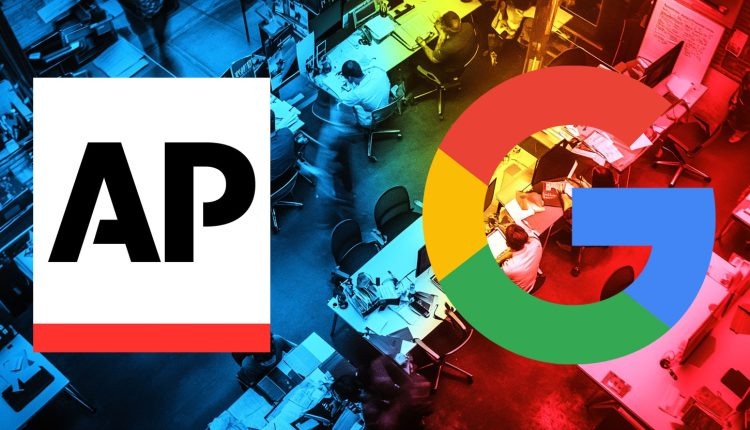In recent years, technology has revolutionized how we access information, particularly in the realm of news delivery. A major development in this shift has been the partnership between Google and the Associated Press (AP), a collaboration aimed at leveraging artificial intelligence (AI) to enhance the way news is curated and delivered. This partnership promises to reshape the news industry, creating new possibilities for how content is produced, consumed, and shared across platforms. The primary goal of this alliance is to enable faster, more accurate, and personalized news delivery to readers worldwide.

The relationship between Google and AP is not just about AI technology itself but how that technology can be used to enhance the journalistic process. Traditionally, news outlets rely on human editors and reporters to sift through vast amounts of information, analyze it, and present it to the public. While this process works well, it can be slow and labor-intensive. AI-powered systems, on the other hand, can automate much of the work involved, sorting through large datasets and identifying trends and insights much faster than any human could. With this technology, the accuracy and speed of news reporting can be drastically improved, providing readers with the most up-to-date and relevant information.
The key benefit of AI in news delivery is its ability to process and analyze large volumes of data at a speed and scale that is simply not possible for human teams. Google’s involvement in this collaboration ensures that AP can use the latest AI models to enhance their news coverage, including algorithms that can scan news sources, identify breaking stories, and even predict what topics are likely to become important in the coming days. This predictive capability is a game-changer for the news industry, allowing outlets to stay ahead of the curve and provide information as it develops.
AI can also be used to tailor news content to individual preferences. Through machine learning algorithms, AI systems can analyze readers’ behavior and suggest articles, topics, and stories that align with their interests. This personalization ensures that readers are more likely to engage with content that is relevant to them, creating a more satisfying news consumption experience. For the AP, this means reaching more people and engaging audiences on a deeper level, which ultimately drives traffic and increases the value of their content.
Additionally, the use of AI in news delivery allows for greater efficiency in content creation. Traditionally, journalists would spend hours researching and writing articles. With AI tools, much of this research can be automated, freeing up journalists to focus on higher-level tasks such as writing, editing, and analyzing. For example, AI can help journalists quickly identify key facts and figures from reports, freeing them from the time-consuming process of manual data gathering. As a result, journalists can produce more content in less time, and the quality of the content can be enhanced with the insights provided by AI-powered analysis.
The integration of AI technology into newsrooms also has significant implications for fact-checking. One of the major challenges faced by news outlets today is the spread of misinformation. AI tools can help identify false or misleading information by cross-referencing sources and verifying claims against trusted databases. This helps ensure that the news delivered to readers is accurate and trustworthy, which is critical in an era where fake news can spread rapidly across social media platforms. Google and AP’s collaboration is particularly important in this regard, as it enhances the credibility of news by integrating real-time fact-checking into the content delivery process.
One of the most striking aspects of the collaboration between Google and AP is the potential to democratize access to news. By utilizing AI-powered systems, the partners can ensure that news is delivered more efficiently and accurately, even in remote or underserved areas. This technology enables news organizations to reach a wider audience, ensuring that people in every corner of the globe have access to the same information, regardless of their location or technological infrastructure. Whether it’s a breaking story in a distant country or an important local issue, AI-powered news delivery ensures that everyone gets the same timely and accurate updates.
In addition to improving the speed and accuracy of news delivery, AI also offers the potential to reduce bias in news reporting. Traditional newsrooms are often criticized for having inherent biases based on the personal views of journalists or the editorial stance of the outlet. AI algorithms, however, are designed to be impartial, analyzing data without any preconceived notions or political leanings. This could help news organizations present a more balanced and objective view of events, ensuring that readers are exposed to a variety of perspectives on any given issue. By incorporating AI into the news production process, Google and AP are taking a significant step toward reducing bias and promoting fairness in journalism.
The economic impact of AI-powered news delivery is also worth considering. With the ability to automate tasks such as content curation, research, and fact-checking, news outlets can reduce their operating costs. This allows organizations to allocate resources more effectively, investing in areas such as investigative journalism, in-depth reporting, and specialized content creation. The efficiency gains from AI can also lead to a more sustainable business model for news outlets, which have faced declining revenues in recent years. By adopting AI, AP and other media outlets can ensure that they remain financially viable while continuing to produce high-quality, relevant content.
The role of data in this partnership cannot be overstated. In order to effectively deliver personalized news, AI systems rely on vast amounts of data from users. This data can come from various sources, including user behavior on websites, social media interactions, and past consumption patterns. Google, with its extensive data ecosystem, is well-positioned to provide the necessary infrastructure for this personalized news delivery. By analyzing this data, AI systems can continuously learn and adapt, ensuring that the news recommendations they provide are always up-to-date and relevant to individual readers. However, the use of such data also raises important questions about privacy and data security. It is essential that both Google and AP take measures to protect user data and ensure that it is used responsibly.
Looking ahead, the future of AI-powered news delivery seems bright. As the technology continues to evolve, it is likely that we will see even greater advancements in how news is delivered to the public. We may see the emergence of fully automated newsrooms, where AI handles the bulk of content creation and editorial decisions. While this may sound like a dramatic shift, it is important to remember that AI is not intended to replace human journalists. Rather, it is designed to assist them by providing powerful tools that can enhance their work. The human touch will always be essential in journalism, as it is the journalist’s unique perspective and judgment that adds value to the content. However, by partnering with Google, AP is positioning itself at the forefront of this technological revolution, ensuring that it remains competitive in an ever-changing media landscape.
The partnership between Google and the Associated Press marks a significant milestone in the evolution of news delivery. By combining the power of AI with the trusted journalistic expertise of AP, this collaboration has the potential to transform the news industry. From personalized news recommendations to faster and more accurate reporting, the benefits of AI-powered news delivery are clear. However, there are also challenges to consider, particularly around data privacy and the role of human journalists in an increasingly automated world. As this partnership continues to develop, it will be interesting to see how these issues are addressed and what the future holds for AI-driven journalism. What is certain is that the way we consume news is changing, and this collaboration is just the beginning of a new era in how information is shared and consumed globally.










Add Comment